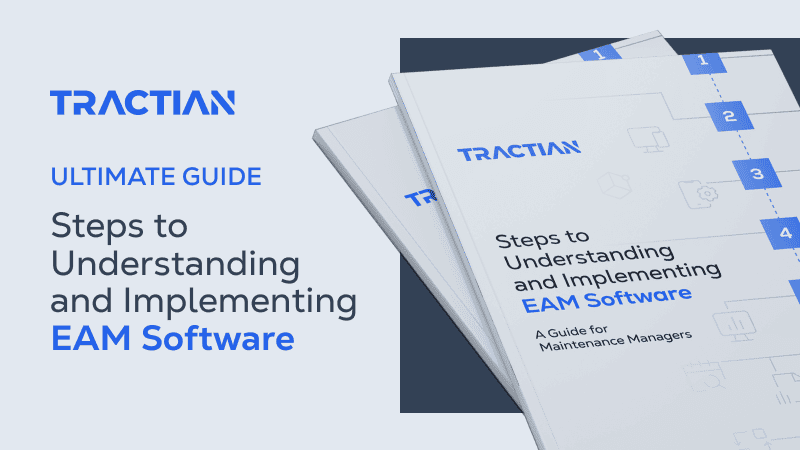Availability in industrial settings can be defined as the probability that a machine will produce or be available to produce in a given period of time. In other words, if the average asset availability of a machine is 80%, this means that, on average, the machine is working or available for work only 80% of the time.
This KPI is important because it indicates the idle time in which the pieces of equipment are not in working order and are in fact unproductive. It’s often used when high costs are related to assets not working properly.
In this article, we will show you how to achieve maximum asset availability.
Learn More: 8 Essential KPIs for Maintenance Management
The Importance of Asset Availability in Today’s Industry
Within organizations, ensuring equipment availability and reliability, KPIs that can be achieved through effective maintenance, has a direct impact on improving industrial competitiveness.
Machine availability is directly linked to factors such as the correct operation of equipment, along with the purchasing and supply sector running smoothly. This results in greater operational efficiency, as production lines and facilities can continue to work without the need for sudden shutdowns or downtime.
The absence of spare parts, for example, can result in the machine being shut down for a longer period. The most crucial factor, however, is the quality of maintenance services.
This indicator is also directly linked to the quality of the end product. When assets work consistently, product quality is maintained – and this is an essential part of customer satisfaction.
In a highly competitive market, companies that manage to keep their assets available gain significant advantages, as they are able to meet customer demands more efficiently.
The ability to meet deadlines and maintain product quality thus contributes to the company’s reputation. Satisfied customers and confident business partners are key to continuous growth and success.
5 Ways to Reduce Unplanned Downtime
Common Challenges Affecting Asset Availability
The main goal of industrial maintenance, as we have already mentioned, is to guarantee the availability of equipment and facilities and increase productivity, whilst meeting the needs of the industrial production process and preserving the environment. However, there are common challenges that directly affect machine availability.
In continuous processing companies, such as petrochemical plants and oil refineries, production takes place in long, high-volume batches, which leads to bottlenecks. Failures in bottlenecks cause more than proportional damage to industrial productivity.
Bottlenecks are very common and have somewhat similar causes:
- Inadequate maintenance without an effective preventative maintenance plan generates asset downtime, use of worn parts, reactive maintenance practices and lack of regular monitoring.
- Age of equipment, since older machines tend to be more prone to failure due to natural wear over time – this is visible in the Weibull reliability curve itself.
- Lack of spare parts, as inadequate stock management or the absence of a reliable parts supplier can contribute to decreased asset availability rates.
- Lack of professional expertise, which can result in delays in identifying and repairing machine problems.
- Natural wear over time, which can include wear on parts, corrosion and other factors that affect equipment performance. This can be seen in the Bathtub Curve analysis.
- Lack of continuous machine monitoring results in undetected faults and unexpected breakdowns and downtime, leading to reduced availability rates.
- Excessive maintenance costs. Investing excessively in maintenance without strategic planning can result in high costs with no guarantee of greater availability.
How to Use Maintenance KPIs, Metrics, and Industrial Best Practices to Measure and Improve Availability
By choosing and defining specific KPIs, companies can accurately track how long their assets are in operation for. This provides a clear view of how available these machines are.

They also help identify problem areas and investigate the root cause of issues and take the necessary action.
By setting specific targets based on the KPIs that make sense for your operation, you can achieve the goals created to reach availability. It’s important to remember that challenging targets for the whole maintenance team encourage continuous improvement of the entire process.
That’s why, over time, the consistent use of KPIs allows you to monitor availability trends. This helps to identify whether the situation is getting better or worse and then take proactive measures such as prioritizing resources and investments. If a certain asset or area shows low availability, for example, the allocation of resources for specific improvements can be justified.
KPIs such as Mean Time Between Failure (MTBF) and Mean Time to Repair (MTTR) are essential for evaluating the effectiveness of preventive and predictive maintenance activities. They help determine whether these strategies are reducing unplanned failures and increasing machine availability.
Furthermore, by choosing the right performance indicators for your operation, you can get concrete data on which to base decision-making. Managers can then use this data to decide where to allocate resources and improve the industry’s maintenance strategies.
And with all this KPI-based analysis, managers can implement a culture of continuous improvement, so that progress can be measured and evaluated over time. As targets are achieved, new ones can be set to continue improving availability.

Strategies to Optimize Preventative and Predictive Maintenance and Increase Availability
Now, to answer the big question: how to improve machine availability? Optimizing PM programs and predictive maintenance strategies is crucial to this, it is fundamental to guaranteeing the operational efficiency and company profitability.
With continuous condition monitoring and preventative maintenance data collection, you can analyze data in an advanced way. That is, using advanced technologies assisted by artificial intelligence to prescribe faults and identify problems before they happen.
Efficient critical asset management is also essential for increasing availability and optimizing processes. Implementing solid management to track the life cycle of each machine helps identify when an asset is reaching the end of its useful life and needs to be replaced or upgraded.

And it’s not enough just to invest in cutting-edge machine technologies, it’s also important to train and qualify the industrial team. Equipping your technicians with the knowledge and skills needed to deal with advanced monitoring and maintenance technologies is key to success.
Lastly, integrating maintenance and operation teams is another great way to maximize availability. Effective communication between these teams can help identify problems earlier and act on them faster and more efficiently.
What is Condition Based Maintenance? Learn all about it here
TRACTIAN Sugar & Alcohol Customer Used Prescriptive Monitoring to Increase Availability
One of the largest corn based ethanol producers in America has implemented online condition monitoring technology and prescriptive diagnostics to anticipate machine faults.
The US average availability rate is 95%. The maintenance availability target per plant at this specific Sugar & Alcohol client is currently 99% for all units – and in 2022, all units achieved success.
With the implementation of online condition monitoring, the company has been able to:
- Increase reliability: machine failure rate was drastically reduced to near zero.
- Improve availability rates, ensuring that operations are continuous and efficient.
- Get Return on Investment: the savings generated by reducing equipment failures and unscheduled downtime resulted in a significant ROI for the company.
When KPIs are well implemented, they become one of the greatest tools for maintenance excellence. Want to reach maximum asset availability in your company? Click here to learn more.


